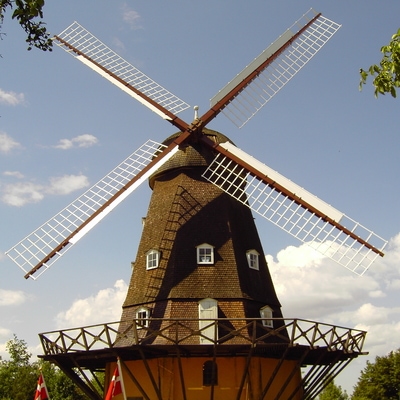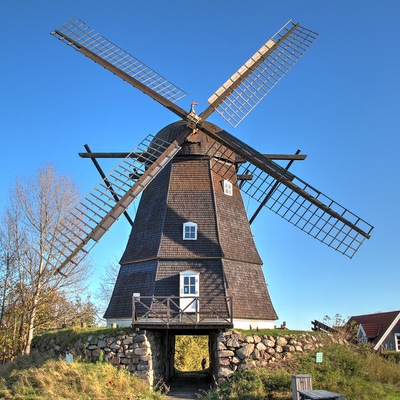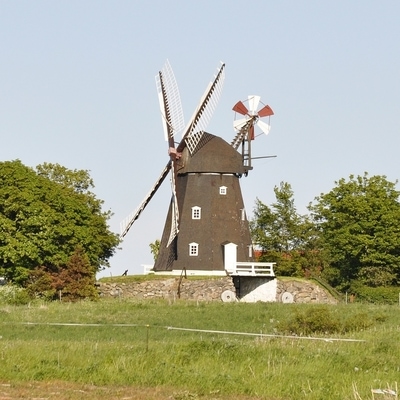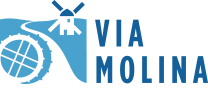Type: car
Sjælland
Nordsjælland route
 Copenhagen
Copenhagen
 Nykøbing
Nykøbing
This mill route through Nordsjælland passes by 12 mills. Mills 2 to 5 are located at the Frilandmuseet in Kongens Lyngby, 10 kilometers north of Copenhagen. The route goes along Denmark’s largest lake, Arresø, and along the coast to Kattegat. The route crosses the Isefjord and continues towards Sjællands Odde: a 15 kilometer long peninsula between the Kattegat and the bay of Sejerø. Nordsjælland has large lakes and many forests, and is nicknamed “Kings North Sealand” due to its castles, which can also be visited.
Kastelsmøllen
Kastellet, Bygning 24A, 2100 København Ø
Ellested Vandmølle
Kongevejen 100, 2800 Kgs. Lyngby
Karlstrup Stubmølle
Kongevejen 100, 2800 Kgs. Lyngby
Fuglevad Vindmølle
Kongevejen 100, 2800 Kgs. Lyngby
Læsø Stubmølle
Kongevejen 100, 2800 Kgs. Lyngby
Hørsholm Mølle
Ved Møllen 8, 2970 Hørsholm
Karlebo Mølle
Kirkeltevej 161 C, 2980 Kokkedal
Højsager Mølle
Højsagervej 8, 3480 Fredensborg
Skenkelsø Mølle
Maglehøjvej 42, 3650 Ølstykke
Jægerspris Mølle
Møllevej 50, 3630 Jægerspris
Melby Mølle
Melbyvej 7, 3370 Melby
Lumsås Mølle
Lumsås Møllevej 6, Lumsås, 4500 Nykøbing Sj

Hørsholm Mølle
Hørsholm Mill was built in 1890-91. A steam engine was installed in 1895, which was later replaced by an electric motor. The mill was used until 1977, when the municipality of Hørsholm took over the mill and restored it. On the 100 years anniversary in 1991, the Craftsmen’s Association for Horsholm and Surroundings Area opened a collection of handicrafts.
Website
Melby Mølle
The mill is a Dutch mill, built in 1878 at the request of the seaman Hans Peter Petersen from “Havegaard” in Lumsås. The Melby Mølle is a stage mill, with an underpass for traffic. The upper part of the mill was built in timber and the lower part in stone. It was built as a grain mill, later a sawmill was established. The mill is open to the public.

Lumsås Mølle
Lumsås Mill is from 1834 and completely restored and fully functional. It’s a mill museum where flour is milled. The fantastic wooden structures, the unique decorations inside – the only of its kind in Denmark – and the beautiful view from the mill are all part of the experience.
Website